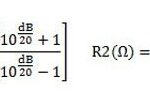The Mme, or Mobility Management Entity, is a Critical Component in the Architecture of 5G (Fifth Generation) Wireless Networks. As part of the Core Network, the Mme Plays a Pivotal Role in Managing the Mobility of User Equipment (UE) and Handling Key Signaling Procedures. Its functions are diverse and contributor to the efficient and reliable operation of the 5g network. Here's an in-depth Explanation of the Functions of the Mrs. In 5g:
- Mobility Management:
- Tracking and managing ue movements:
- One of the Primary Functions of the Mme is to track and Manage the Mobility of Ues Within The 5g Network. It Keeps Track of the Location and Status of Ues Asy Move Between Different Cells or Areas, Ensuring Seamless Connectivity During Handovers.
- Handover Decision Making:
- The Mme is Involved in Making Decisions related to handovers, Determining when A UE Should Transition from one cell to another for optimal network performance. This included Decisions on intra-Fréquency, Inter-Frequency, and Inter-Radio Access Technology (RAT) Handovers.
- Interweking With Ran:
- Ms. Closely Interacts with the Radio Access Network (Ran), Including the GNB (GNODEB) and e-uutran (Evolved Universal Terresrial Radio Access Network), to coordinate Handovers and Manage Mobility-Related Signaling.
- Tracking and managing ue movements:
- Management session:
- UE session Establishment and Release:
- Ms. is Responsible for Establishing and Releasesing Sessions for Ues. This included procedures related to the initiation of communication sessions, ENSURING that the necessary resurces are allocated for data transmission and reception.
- Bearer Management:
- Ms. Management The Establishment, Modification, and Release of Bearers Associated With Ue Sessions. Bearers are logical channel that support specific QOS requirements and enable the transmission of user data.
- Support for Different Services:
- Ms. Supports The Establishment of Sessions and Bearers Tailored for Different Services, Including Enhanced Mobile Broadband (EMBB), Massive Machine Type Communication (MMTC), and ultra-relicable Low-Latency Communication (URLLC).
- UE session Establishment and Release:
- Security Control:
- Authentication and Key Management:
- Mme is involved in Authentication and Key Management Procedures to Ensure the Security of Communications Between Ues and the Core Network. It Plays a Crucial Role in the Establishment of Secure Communication Channels.
- Integrity Protection and Encryption:
- Ms. Enforces Integrity Protection and Encryption Mechanisms to Safeguard User Data and Signaling Information As It Traverses The Network. This protects against unauthorized access and potential security threads.
- Subscriber Identity Handling:
- Ms. Management Subscriber Identities and Authentication Information, ENSURING THAT ONLY AUTH AUTORIZED UES Can Access the 5G Network. Subscriber Identity Handling is essential for preventing unauthorized access and protecting user privacy.
- Authentication and Key Management:
- Signaling mode:
- Paging and registration:
- In the idle mode, when ues are not actively committed in communication, Ms. Handles Procedures related to Paging and Registration. It Initities Paging to Locate Ues and Manage the Registration Process when Ues Re-Enter The Network.
- Rental tracking:
- Ms. is responsible for tracking the rental of ues in idle mode, facilitating efficient paging and signaling procedures when there is incoming communication for a specific ue.
- Paging and registration:
- Interweking With Other Network Elements:
- Connection to Serving Gateway (SGW) and Packet Data Network Gateway (PGW):
- Ms. Interfaces with the Serving Gateway (SGW) and Packet Data Network Gateway (PGW) Within the Core Network. This collaboration Ensures The Efficient Routing of User Data and the Establishment of Bearers to Support Communication Sessions.
- Interaction with Home Subscriber Server (HSS):
- Ms. Interacts with the Home Subscriber Server (HSS), Which Stores Subscribing Profiles and Authentication Information. This interaction is crucial for subscriber management, authentication, and access control.
- Connection to Serving Gateway (SGW) and Packet Data Network Gateway (PGW):
- Policy Enfurcement:
- Quality of Service (QOS) Enfurcement:
- Ms. Enforces Policies Related to Quality of Service (QOS) for User Sessions. It ensures that the allocated resources and communication parameters meet the specific requirements for different services.
- Differentiation service:
- Ms. Supports Service Differentiation by En Enforcing Policies that prioritize certain types of Traffic or Provide Enhanced Services Based On User Subscription Plans and Requirements.
- Quality of Service (QOS) Enfurcement:
- Emergency Services Handling:
- Emergency Call Support:
- Ms. Plays a Role in Supporting Emergency Services by Facilitating the Establishment of Priority Sessions for Emergency Calls. It ensures that emergency calls receif preferential treatment and timely resource allowance.
- Rental Information for Emergency Services:
- Ms. Provids Rental Information for Ues Making Emergency Calls, Assting Emergency Services in Quickly Location and Livor to Incidents.
- Emergency Call Support:
In Summary, the Mme in 5g Serves as a Central Entity in the Core Network, Managing the Mobility of Ues, Handling Key Signaling Procedures, Ensuring Secure and Efficient Communication, and Supporting Different Services With Varying Qos Requirements. Its functions contributes to the boundability, security, and flexibility of the 5G Network Architecture.
